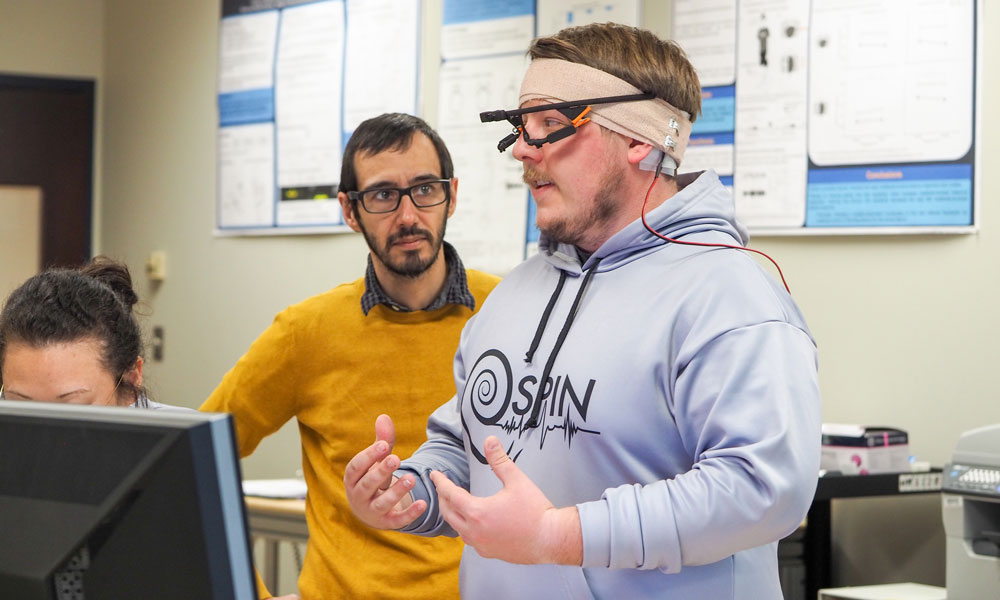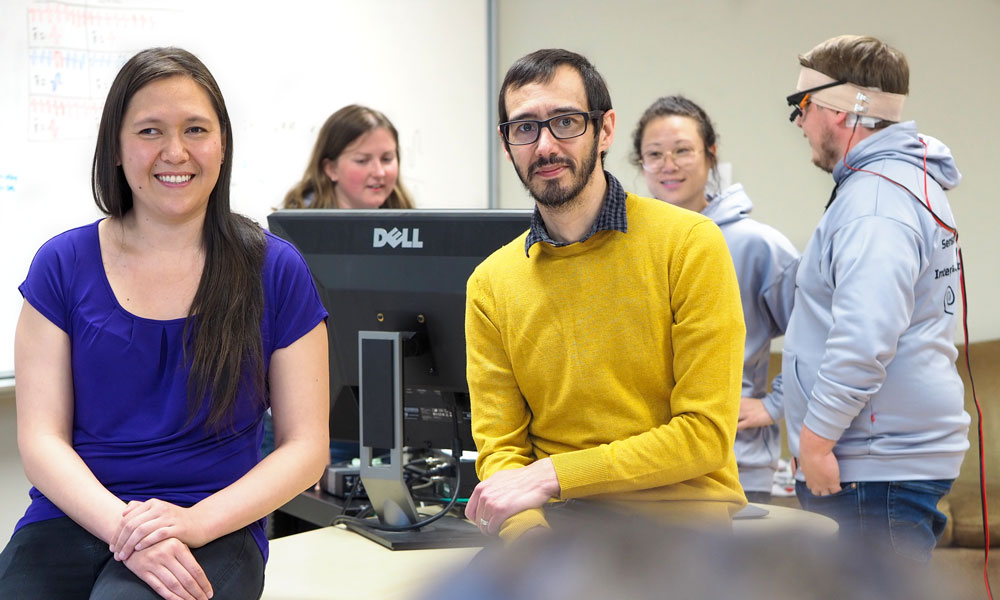
As a teen growing up in Newfoundland, Dr. Brian Dalton—now an Assistant Professor of neuromuscular physiology at UBC Okanagan’s School of Health and Exercise Sciences—noticed something happening to his grandmother Grace. She lived with the Dalton family for years, and the two were close. But, beginning in her mid-60s, she swayed, stumbled and felt dizzy. She was losing her ability to stay upright.
At university, Dr. Dalton took a kinesiology elective that triggered memories of his grandmother and stoked a desire to discover why her mobility and balance faltered. When he joined UBCO in 2016—with a PhD in kinesiology and a postdoctoral fellowship under his belt—Dr. Dalton started the university’s SPIN (Sensorimotor Physiology and Integrative Neuromechanics) Lab.
The primary aim of the lab is to answer two questions: what exactly causes older adults to lose their sense of balance? And what can be done to stave off the erosion of that critical human function?
Dr. Dalton, along with Dr. Vicki Komisar at the UBCO School of Engineering, have ongoing collaborations, including the UBCO-supported Aging in Place research cluster, which helps support older adults maintain active living, independence and emotional health.

Often, as people get older, explains Dr. Komisar, they will grab furniture or countertops to prevent a fall. “As we age, we can think of our home setting as fundamental to assisting us in getting up and around. But very little thought has gone into how the design of these home features influence mobility and fall prevention.” Studies show that when older adults fall at home and remain alone on a floor for over an hour, they are at higher risk for pressure sores, unintentional incontinence, and permanent entry into long-term care.
Dr. Komisar is building relationships with companies interested in creating specialized furniture—such as countertops with built-in handholds—that people can use to stop a fall or get up afterwards. “I look at how we can build these devices seamlessly into the home by providing recommendations to furniture designers. It’s thinking of furniture and household appliances not only as something people use to sit on and do basic activities with, but ultimately recognizing that it’s going to double as a mobility aid eventually in somebody’s life span.”
Please visit the UBC Okanagan News website to read the full story.
Through Strategy 16: Public Relevance, UBC aims to ensure that the university’s educational and research efforts have a positive influence on communities in British Columbia and beyond.